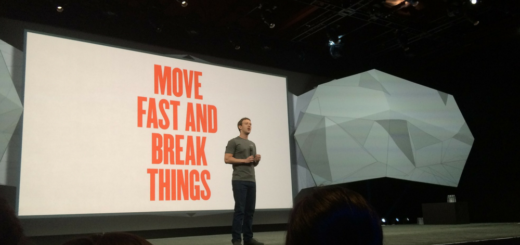What 23andMe Will Tell You About Your DNA

By MATTHIAS SHAPIRO
I am a professional with a sense of decorum and perspective, so I’m trying to tone down my excitement over the recent consumer genetics news this last week: The FDA has approved 23andMe to offer health information related to its direct-to-consumer genetics testing.
 THIS IS THE BEST THING EVER!!!!
THIS IS THE BEST THING EVER!!!!
I like genetics and 23andMe is a very exciting company to me, so I want to take some time to explain exactly what this news means.
What Is 23andMe?
23andMe offers a consumer-facing genetics test. Pay $200, spit in a tube, wait a few weeks and they will deliver a report on your DNA. Two weeks ago, that report was basically just your genetic ancestry.

You can also download the raw data that 23andMe uses to determine things like your ancestry and (now) your genetic health information. To me, this was the most exciting part of the service because I like raw data. But it takes a certain skill set to work with that data … or even to understand what the data is supposed to mean.
I wrote on this in an introduction to genetics hacking a few months back. Just getting to a point where you can understand what the data means and how to effectively use it is a pretty steep learning curve.
A few years ago, 23andMe would deliver a huge list of what your DNA tells you about your health, including propensities for certain kinds of cancer, diabetes, Alzheimer’s, and a host of other health-based information. But the FDA shut that down over their concerns that consumers were being misled by the health reports.
What 23andMe Offers Now
With the new FDA approval, the health reports are significantly scaled back. 23andMe now delivers health information related to genetic carrier status, physical traits, and wellness.
23andMe Carrier Data
This is the most interesting one to me. The carrier data tells us if we have a genetic variant for a host of recessive genetic conditions. Delivering carrier data doesn’t really give you very much information about your health.
If, for example, you had cystic fibrosis, you would not find out through a personal genetics test. You would know because cystic fibrosis is an awful disease and you have it. However, CF is a genetic disease that people get by having two copies of the recessive gene that causes CF. If you have only one copy of this gene, you don’t have CF, but you are a CF “carrier.”

While carrier data this isn’t as wide-ranging as the early health reports that 23andMe did, the results will be a lot more certain. Keep in mind, however, that many of these gene variants are ancestry-related. For example, the GRHPR gene related to Primary Hyperoxaluria Type 2 is mostly relevant for people with European decent.
This list is formatted as Disease – gene
- ARSACS – SACS
- Agenesis of the Corpus Callosum with Peripheral Neuropathy – SLC12A6
- Autosomal Recessive Polycystic Kidney Disease – PKHD1
- Beta Thalassemia and Related Hemoglobinopathies – HBB
- Bloom Syndrome – BLM
- Congenital Disorder of Glycosylation Type 1a (PMM2-CDG) – PMM2
- Cystic Fibrosis – CFTR
- D-Bifunctional Protein Deficiency – HSD17B4
- Dihydrolipoamide Dehydrogenase Deficiency – DLD
- Familial Dysautonomia – IKBKAP
- Fanconi Anemia Group C – FANCC
- GRACILE Syndrome – BCS1L
- Glycogen Storage Disease Type Ia – G6PC
- Glycogen Storage Disease Type Ib – SLC37A4
- Hereditary Fructose Intolerance – ALDOB
- Leigh Syndrome, French Canadian Type – LRPPRC
- Limb-Girdle Muscular Dystrophy Type 2D – SGCA
- Limb-Girdle Muscular Dystrophy Type 2E – SGCB
- Limb-Girdle Muscular Dystrophy Type 2I – FKRP
- MCAD Deficiency – ACADM
- Maple Syrup Urine Disease Type 1B – BCKDHB
- Neuronal Ceroid Lipofuscinosis (CLN5-Related) – CLN5
- Neuronal Ceroid Lipofuscinosis (PPT1-Related) – PPT1
- Niemann-Pick Disease Type A – SMPD1
- Nijmegen Breakage Syndrome – NBN
- Nonsyndromic Hearing Loss and Deafness, DFNB1 (GJB2-Related) – GJB2
- Pendred Syndrome and DFNB4 Hearing Loss – SLC26A4
- Primary Hyperoxaluria Type 2 – GRHPR
- Rhizomelic Chondrodysplasia Punctata Type 1 – PEX7
- Sickle Cell Anemia – HBB
- Sjögren-Larsson Syndrome – ALDH3A2
- Tay-Sachs Disease – HEXA
- Tyrosinemia Type I – FAH
- Usher Syndrome Type 1F – PCDH15
- Usher Syndrome Type 3A – CLRN1
- Zellweger Syndrome Spectrum (PEX1-Related) – PEX1
23andMe Traits
This is information about how likely are you to have certain characteristics like hair color, taste, eye color, facial characteristics, etc. This is pretty basic stuff and most is related to hair and facial characteristics.
Reports include:
- Asparagus Odor Detection
- Back Hair (available for men only)
- Bald Spot (available for men only)
- Bitter Taste Perception
- Cheek Dimples
- Cleft Chin
- Earlobe Type
- Earwax Type
- Eye Color
- Finger Length Ratio
- Freckles
- Hair Curliness
- Light or Dark Hair
- Male Hair Loss (available for men only)
- Newborn Hair Amount
- Photic Sneeze Reflex
- Red Hair
- Skin Pigmentation
- Sweet Taste Preference
- Toe Length Ratio
- Unibrow
- Widow’s Peak
23andMe Wellness Reports
This is genetic predisposition toward certain traits. This kind of “predisposition” report is actually what made up the majority of the previous health reports, but the FDA didn’t like 23andMe telling people they were predisposed to dying, so the wellness information here focuses on things that don’t make you die.
Reports include:
- caffeine consumption
- lactose intolerance
- alcohol flush syndrome
- muscle composition
Wait, So Why Was the FDA Upset?
This last point is a bit of a teaser. The details of why the FDA took 23andMe’s health information offline as well as why that decision was a compromise is mixed news for both the world of personal genetics and consumer health in general. Look for a Part II 23andMe blog post opening up that discussion soon.
UPDATE: Read Part II of the 23andMe saga here.
Matthias Shapiro is a software engineer, data vis designer, genetics data hobbiest, and technical educator based in Seattle. He tweets under @politicalmath, where he is occasionally right about some things.




i see that this post is from october 2015 and not sure if it is still active ?
i am waiting for my 23 and me report to arrive it’s been about 3 weeks since i sent off my "spit".
i have a question about the "autosomal recessive disorder" results.
i am a carrier of PKU as well as my husband.
we have 2 adult children with PKU and a third adult child who is not a carrier and has the "good" gene.
i see in your list of the autosomal diseases that you can find in the DNA that PKU is not listed. it falls into the same category as tag-sachs and cystic fibrosis.
why doesn’t it show up in the 23andme results ?
I see you don’t monetize your site, don’t waste your traffic, you can earn additional bucks
every month because you’ve got hi quality content. If you want to know how to make
extra bucks, search for: Boorfe’s tips best adsense alternative